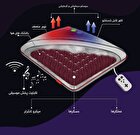Australian Scientists Make Breakthrough in Understanding Love

In a world-first study, a team from the Australian National University (ANU), University of Canberra (UC) and University of South Australia (UniSA) explored the link between the brain's behavioral action system (BAS) and romantic love, the Xinhua reported.
The team of researchers surveyed 1,556 young adults who identified as being "in love" on the emotional reaction to their partner, their behavior around them and the focus they placed on their loved one above all others in an attempt to better understand the process of falling in love.
They found that the brain reacts differently when a person is in love, making the loved one the center of their attention.
Phil Kavanagh, a contributor to the study from UC and UniSA, said in a media release that the new findings show romantic love is linked to changes in behavior as well as emotion.
"We know the role that oxytocin plays in romantic love, because we get waves of it circulating throughout our nervous system and blood stream when we interact with loved ones," he said.
"The way that loved ones take on special importance, however, is due to oxytocin combining with dopamine, a chemical that our brain releases during romantic love. Essentially, love activates pathways in the brain associated with positive feelings."
Oxytocin, a naturally-occurring hormone, has previously been identified as causing the euphoria felt when falling in love.
The lead author of the study, Adam Bode from ANU, said that romantic love is thought to have first emerged 5 million years ago but that little is known about its evolution.
To help improve that understanding the team will next investigate the differences between men and women in their approach to love and undertake a global survey to identify different types of romantic lovers.
4155/v
























